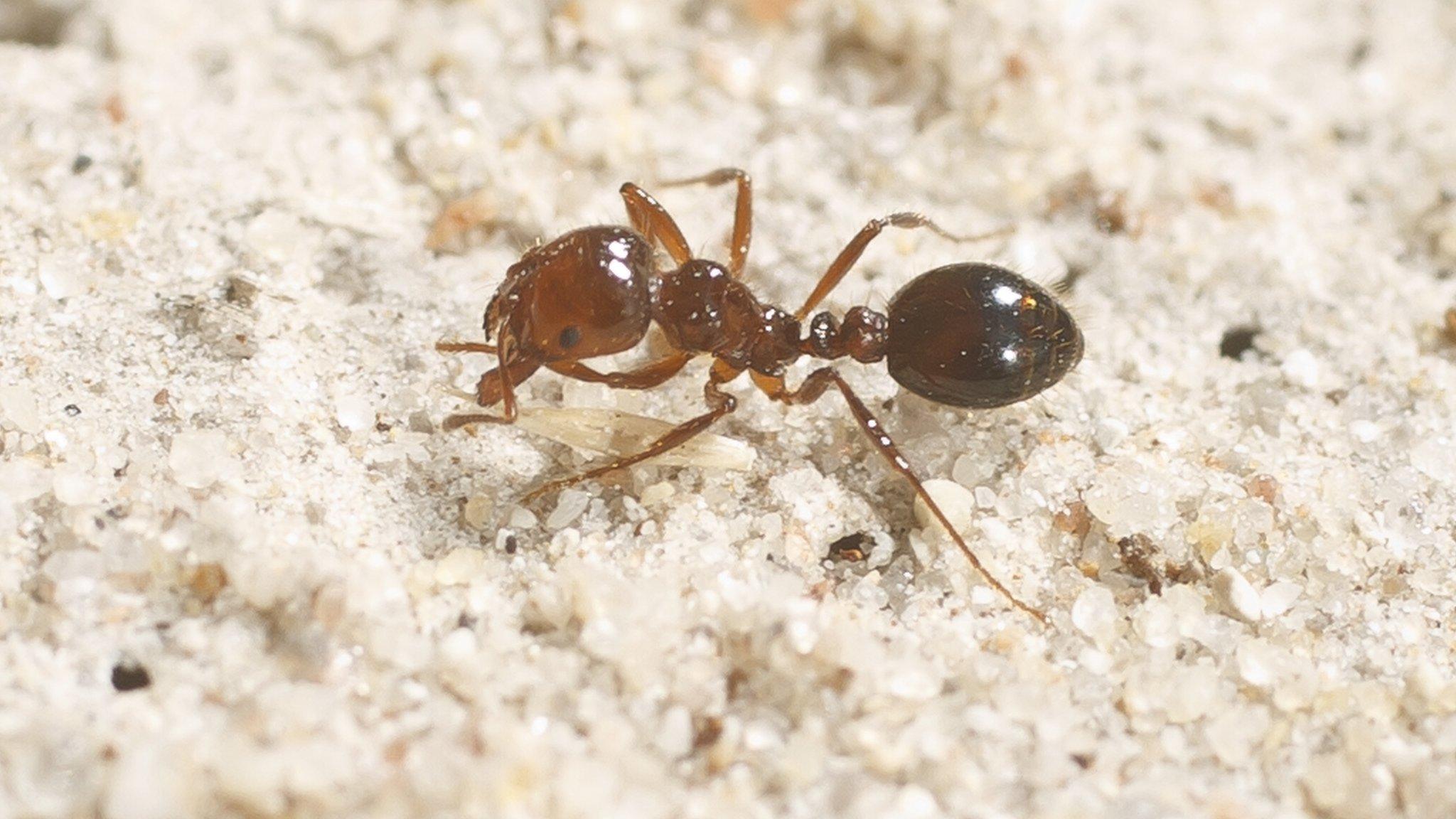Australia floods: Deadly fire ants form rafts to spread
- Published
Watch: Invasive fire ants raft in Australian flood waters
Fire ants are forming rafts to travel on flood waters across storm-ravaged Australia, aiding the spread of one of the world's most invasive species.
Considered a super pest, fire ants can cause major ecosystem changes and agricultural loss by feeding on native plants and animals.
Their stings can also kill people.
The Invasive Species Council (ISC) says the unusual rafting behaviour is evidence that "fire ant densities are increasing" in Australia.
It is asking communities across south-east Queensland and northern New South Wales - which have been battling wild weather - to be on high alert for fire ants, as they move in currents to "establish footholds in new areas".
Video evidence of the rafting has been documented on cane farms south of Brisbane - where fire ants have already infested about 700,000 hectares of land.
Native to South America, red imported fire ants were first detected in Queensland in 2001 and have largely been contained within the state's borders since then. How they entered Australia remains a mystery, but it is thought that they likely came via shipping containers from the US.
In November, local authorities reported that several new fire ant nests had spread into New South Wales from the Queensland border for the very first time - prompting a nationwide funding boost for eradication efforts.
Fire ants are most commonly spread through contaminated soil and materials brought into new areas by people. Winged fire ant queens are capable of flying several kilometres at a time but can travel much further if blown by wind currents.
Australia's unique climate and lack of natural predators make it "the perfect home for fire ants", which could inhabit "the entire continent except for the most extreme coldest locations" if not contained, according to biosecurity authorities.
One of the biggest fears shared by experts is that they could one day get into the nation's Murray Darling River system and then move rapidly into new states and territories.
A three-year-old colony can hold as many as 100,000 fire ants and a mature queen can lay up to 5,000 eggs per day.
In recent decades, fire ants have spread across the US, China, Taiwan, Japan and the Philippines, according to the Australian government.
Related topics
- Published8 December 2016
